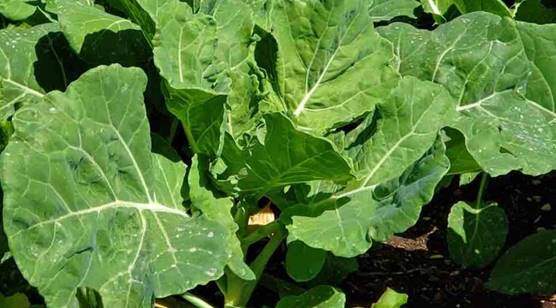Rabbits can eat collard greens. It is one of the suggested vegetables that these pets can eat. Just mix it with other healthy ones. One cup of a chopped mixture of 4-6 of these veggies should be enough for a rabbit that weighs about two pounds.
However, that said, you need to know that collard greens are high in calcium together with others like kale, spinach, mustard green, beet green, dandelion greens, etcetera. Only include one veggie from those that are high in calcium in your vegetable mix.

Similarly, veggies like radish tops, Swiss chard, beet greens, mustard greens, spinach, and sprouts are high in oxalic acid. Your mix should also have at most one of these veggies.
If your bunny has a history of calcium-based urinary bladder stones or kidney problems, don’t give them a lot since the high amount of calcium may worsen these urinary bladder stones. This restriction applies to those high in oxalic acid.
More on collard greens
If you are unsure what collard greens are, they are one of the Brassica oleracea, which has other popular vegetables like cabbage, kale, spring greens, cauliflower, kohlrabi, Brussels sprouts, broccoli, broccolini, among others. All these are members of the cabbage, crucifers, or mustard family, i.e., the family Brassicaceae.
To be more specific, they belong to Acephala Group, which also has spring greens and kale. Besides their use as edible veggies, some people grow them ornamental plants and are a staple vegetable in the Southern United States.
Some of their famous local names include couve (Brazilian and Portuguese), sukuma wiki (East Africa), haakh (Kashmir valley), mbida (Zimbabwe), muriwo (Shona), and raštika or raštan (Montenegro, Herzegovina, and Dalmatia).
Finally, popular cultivars include Vates, Blue Max, Butter Collard, Top bunch, Groninger Blauw, Georgia southern, couve tronchud, and so forth.
Nutrition
Besides being high in calcium, they are rich in vitamin A (especially beta-carotene), vitamin B6, vitamin K, calcium, and manganese. They also have iron, magnesium, riboflavin, vitamin E, potassium, and other nutrients.
Preparing collard for rabbits
Like any other vegetable, you need to ensure that they don’t have any farm chemicals like herbicides, pesticides, or insecticides. Go for organically grown if possible.
Secondly, wash them under running water, chop them, and mix with other chopped veggies. Go for fresh leaves and avoid cooked ones. Cooking will reduce the crunchiness and make fiber much softer.
Finally, as you do to any other new food, introduce them slowly over ten days as you check for any indication of tummy upsets or diarrhea. In the case of diarrhea, gas, or stomach upsets, discontinue their use and revert to those these pets often eat.
Conclusion
Typical rabbit diets should have at least 80% high fiber hay, especially timothy hay, avoid leguminous hay like alfalfa and clover as they are higher in calcium and proteins.
Secondly, note that all fresh plant material should account for 10-15% of their diet portion. Don’t give them more as they don’t have enough fiber but are useful in ensuring proper hydration.
Finally, keep good quality pellets at 5% of their diet. Don’t go beyond these limits unless your bunny has special dietary needs.
